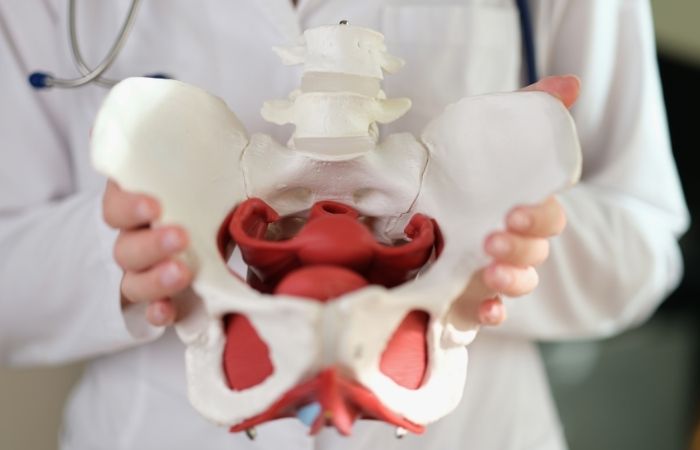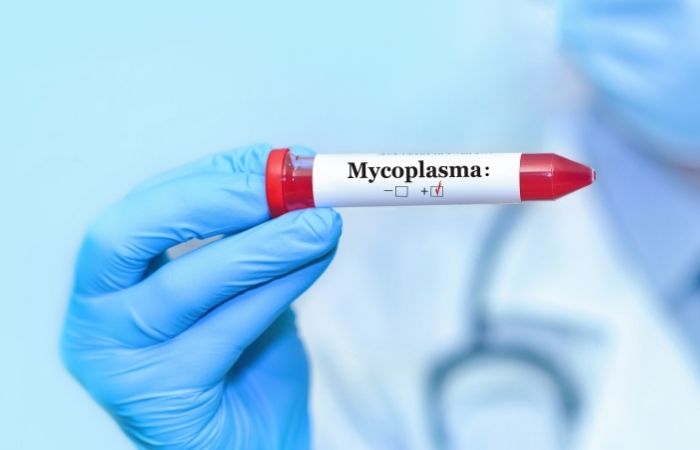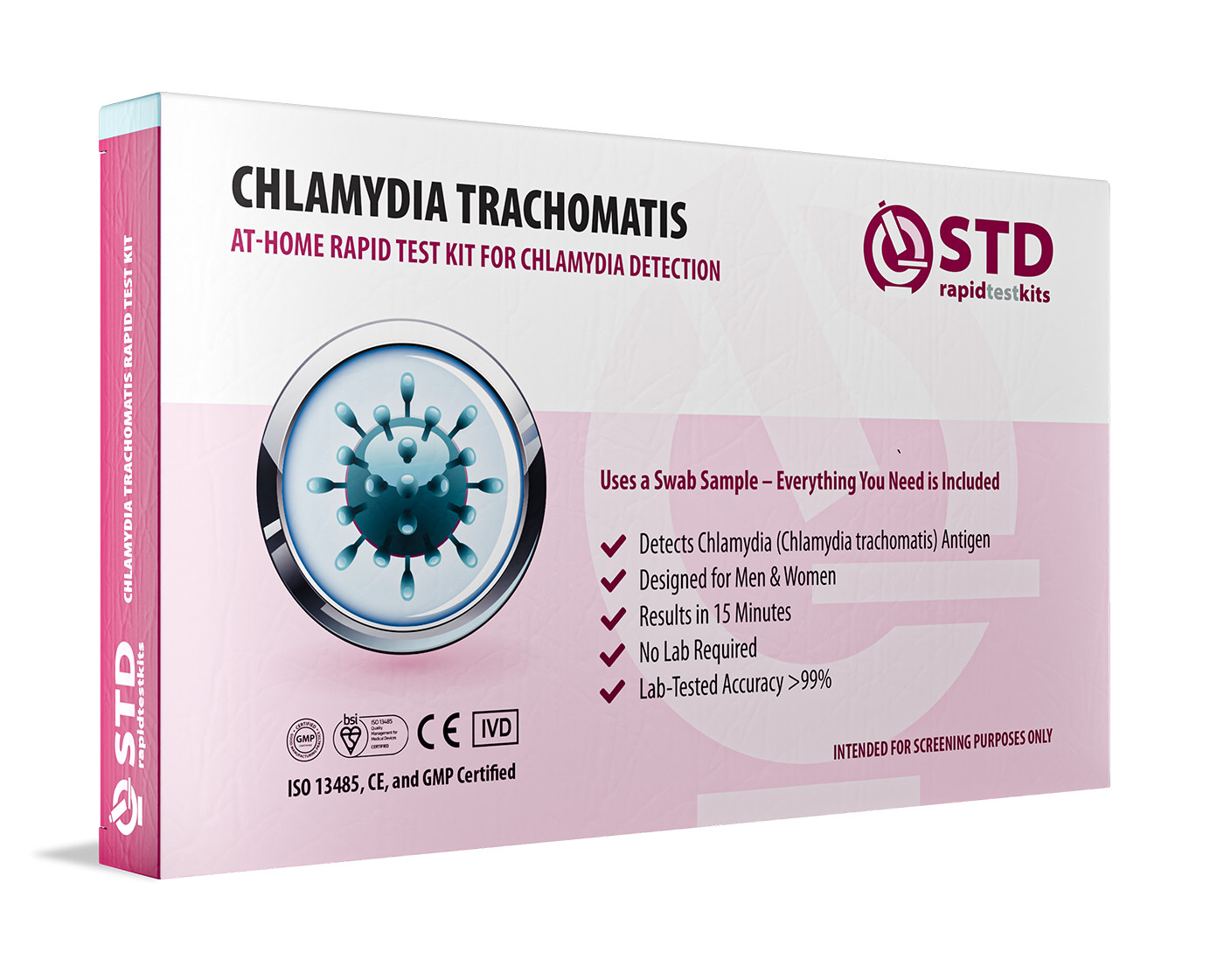Why “Silent” STDs Love Female Anatomy
Your cervix is both gatekeeper and blind spot. Its soft columnar cells are easy targets for bacteria and viruses yet inflammation here rarely causes pain. Add the fact that vaginal discharge naturally fluctuates with each menstrual phase and early red flags get lost in the noise. A 2025 field study of 4200 women found that 63 percent of lab-confirmed infections produced no noticeable symptoms in the first three months. Silent STDs exploit three anatomic quirks:
- Cervical canal depth: Pathogens can multiply beyond visual reach during speculum-free sex.
- Low-nerve density: The upper vagina and cervix lack the pain receptors that scream when say a knee twists.
- Hormonal camouflage: Estrogen-driven discharge changes mirror early infection discharge hiding odor or color shifts until late.
Bottom line: Waiting for burning or itching is like waiting for smoke before you replace the batteries in your fire alarm, too late.

People are also looking for: From Lube Choices to Nail Care: Practical Ways to Slash Your STI Risk
Chlamydia: The Fertility Thief
Chlamydia trachomatis tops every “silent” list for one reason: repercussions show up years later as blocked tubes and ectopic pregnancies. Up to 70 percent of female cases stay asymptomatic during the first six months (CDC). Yet a 2024 prospective cohort found that even asymptomatic infections doubled the risk of pelvic inflammatory disease (PID) within one year.
- Incubation: 7–21 days but tissue damage starts immediately.
- Screening window: NAATs detect DNA 14 days post-exposure.
- Hidden clue: Post-sex spotting when you’re not ovulating, caused by friable cervical tissue.
- Home-test hack: The Chlamydia & Gonorrhea Home Test uses a high-sensitivity NAAT swab; result in 15 minutes.
Untreated chlamydia acts like rust in plumbing, slow silent and catastrophic. Annual screening under 25 or after any new partner is non-negotiable.
Gonorrhea: The Symptom-Free Superbug
The nickname “clap” suggests noise but in women Neisseria gonorrhoeae often whispers. Roughly half of female cases show no symptoms according to Mayo Clinic data. Meanwhile strains resistant to first-line antibiotics have leapfrogged from 0.6 percent in 2015 to 9 percent in 2024.
- Incubation: 2–14 days; asymptomatic carriage up to six months.
- Long-term fallout: Covert PID chronic pelvic pain and increased HIV acquisition by 200 percent.
- Red-flag myth: “I’d feel burning when I pee.” Not always, the urethra may stay calm while bacteria climb to the upper tract.
- Risk filter: New partner plus condomless oral sex still counts, pharyngeal gonorrhea seeds genital infection later.
If your last swab was pre-pandemic book one now or grab a combo kit. This bug doesn’t just hide; it fights back.
Check Your STD Status in Minutes
Test at Home with Remedium10-in-1 STD Test Kit

 For Women
For Women Results in Minutes
Results in Minutes No Lab Needed
No Lab Needed Private & Discreet
Private & DiscreetOrder Now $189.00 $490.00
For all 10 tests
HPV: The Quiet Cell-Shaper
The human papillomavirus isn’t one bug, it’s 200+. High-risk types (16 18 31 etc.) integrate into cervical DNA silently sometimes for a decade. That latency is why nearly every cervical cancer starts as an undetected HPV infection. A 2023 “Twilight Zone” review described HPV’s unique ability to toggle between dormancy and activity based on immune status.
- Latency: Months to years, average clearance in young women is 8–24 months.
- Symptom reality: Genital warts come from low-risk types; high-risk strains are invisible.
- Pap + HPV co-test: Women 30–65 should co-test every five years or every three if Pap-only.
- Self-sample option: Emerging mail-in HPV swabs show 97 percent agreement with clinician samples, watch this space.
Vaccination before first sex reduces cervical cancer risk by 87 percent but screening still matters: vaccines don’t cover every oncogenic variant.
Trichomoniasis: The Under-the-Radar Parasite
Trichomonas vaginalis looks like a wobbly little football under the microscope yet it infects at least 140 million women globally each year. Symptoms (fishy odor frothy discharge) appear in only 30 percent of cases according to a 2025 meta-analysis in Clinical Microbiology Reviews.
- Incubation: 5–28 days but asymptomatic carriage can last 12 months.
- Complications: Preterm birth low birth weight and a three-fold spike in HIV acquisition.
- Diagnosis tip: Wet mount misses 50 percent; NAAT swab is gold standard.
- Under-diagnosis culprit: Many clinics omit Trich from routine STI panels, ask specifically or choose a kit that includes it.
Left untreated Trich acts like a party promoter for other pathogens: its inflammation opens cellular “VIP ropes.” One dose of metronidazole clears it, but only if you know it’s there.
Mycoplasma genitalium: The Antibiotic-Dodger You Don’t Feel
If Chlamydia is the fertility thief Mycoplasma genitalium (MG) is the stealth hacker. This tiny bacterium, smaller than some viruses, invades cervical and endometrial cells with almost no immune alarm bells. A 2025 systematic review found 56 percent of infected women reported zero symptoms for at least four months. Worse MG now shows macrolide resistance rates over 50 percent worldwide.
- Incubation: 7–21 days; silent persistence up to two years in untreated cases.
- Mimic game: When symptoms do appear, spotting mild cramps, they mirror PMS so women shrug them off.
- Fertility fallout: MG increases tubal-factor infertility by 4× compared with uninfected controls.
- Action step: If PID tests come back “negative” ask specifically for an MG NAAT or choose a kit that flags it.

People are also looking for: First-Time STD Test? Here's What You Need to Know
Syphilis: The Shape-Shifter’s Quiet Comeback
Early-stage syphilis once produced obvious chancres. Today lesions often hide on the cervix where mirrors, and nerves, don’t reach. CDC surveillance shows female primary-syphilis cases up 189 percent since 2018 with 40 percent detected only at routine prenatal screening. The painless chancre heals in weeks launching months of “silent” latency while Treponema pallidum travels the bloodstream.
- Hidden window: Latent stage can last 1–20 years with no genital clues.
- Pregnancy risk: Untreated syphilis causes stillbirth in up to 40 percent of cases.
- Red-flag misreads: A faint body rash mistaken for eczema may signal secondary syphilis.
- Screen smart: Add an RPR or treponemal test to annual panels; it’s quick and cheap.
Herpes (HSV-2) Latency: When Nothing Shows
HSV-2 can enter a “deep-sleep” inside sacral nerve clusters for months or years. Women often contract the virus from a partner shedding virus without sores then experience no outbreak themselves. A 2024 cohort in The Journal of Infectious Diseases found 12 percent of seropositive women had never noticed lesions.
- Latency length: Indefinite; first outbreak may pop up during high stress menstruation or another infection.
- Asymptomatic shedding: Up to 10 percent of days per year even without lesions.
- Testing reality: Swabs catch live virus only when lesions exist; type-specific IgG blood tests confirm silent carriers.
- Barrier boost: Daily condoms drop female HSV-2 acquisition by 30 percent but antiviral suppression drops it by 48 percent, talk to your clinician.
When Silence Turns to PID: The Hidden Culprit Behind Chronic Pain
Pelvic Inflammatory Disease isn’t an infection itself, it’s the aftermath. Up to 25 percent of untreated chlamydia gonorrhea or MG cases ascend to the uterus and tubes sometimes without acute pain. A 2025 European study found that 31 percent of laparoscopically confirmed PID cases recalled no recent STI symptoms.
- Silent signs: Unexplained fatigue heavier periods or deep-dyspareunia long after the original infection.
- Irreversible damage: Each PID episode cuts fertility odds by ~15 percent; repeat episodes snowball the risk.
- Early detection: Don’t ignore mild pelvic bloating, ask for a pelvic ultrasound and STI panel.
- Home-care adjunct: Rapid tests won’t diagnose PID but catching root infections early stops the domino effect.
Check Your STD Status in Minutes
Test at Home with RemediumChlamydia Test Kit

 For Men & Women
For Men & Women Results in Minutes
Results in Minutes No Lab Needed
No Lab Needed Private & Discreet
Private & DiscreetOrder Now $33.99 $49.00
Screening Schedules & At-Home Testing: Your Stealth-STD Radar
Think of screening as a dental cleaning for your reproductive system, routine not reactive. Here’s a science-driven cadence:
| Life Stage / Risk | STIs to Test | Frequency |
|---|---|---|
| Sexually active under 25 | Chlamydia Gonorrhea | Every 6 months |
| New partner or partner change | Full panel + Syphilis HIV | Immediately & at 3 months |
| Pregnancy | Syphilis HIV HBV Chlamydia Gonorrhea | 1st visit & 3rd trimester |
| High-risk HPV era (30–65) | HPV DNA + Pap | Every 5 years |
| History of PID | Full panel incl. MG Trich | Every 6 months |
At-home advantage: FDA-cleared self-collection kits now rival clinic sensitivity letting you screen on your timetable. The Complete STD Home Test Kit Package bundles NAATs for eight pathogens, including MG and Trich, plus HIV and syphilis antibody tests in one discreet box. No waiting room no awkward stirrups.
Insurance tip: Many U.S. plans reimburse at-home kits under preventive services; keep your receipt and submit the claim.
Routine Screening Myths vs. Facts
“My last Pap was normal so I’m good.” Wrong. A Pap smear checks cervical cell shape not chlamydia DNA or latent HSV-2. Another common myth: “I’m in a monogamous relationship so I can skip tests.” Data show up to 30 % of PID cases occur in self-identified monogamous women because one partner brought in an undetected infection months earlier. Bust the myths:
- Pap ≠ full STI panel: Add annual NAATs for chlamydia/gonorrhea and antibody tests for syphilis/HSV-2.
- No-symptom window: Infections can stay silent for six months, screening every year is the bare minimum.
- Condom illusion: They cut, but don’t erase, HPV/HSV risk because those viruses shed on skin outside the latex zone.
Fertility Fallout: Silent STDs and Pregnancy Plans
Up to 20 % of unexplained infertility traces back to old undiagnosed chlamydia or MG scars on fallopian tubes. Even low-grade asymptomatic endometritis from gonorrhea can raise miscarriage odds by 60 %. Pre-conception checklist:
- Six-month screen-up: Run a full panel at least six months before trying.
- HPV DNA + Pap: Clear high-risk strains early; pregnancy immune shifts may reactivate HPV.
- Partner pairing: Both halves test together, treatments are useless if only one gets meds.
- Post-treatment retest: Confirm cure four weeks after antibiotics to avoid reinfection loops.

People are also looking for: How to Skim the GLASS Tables and Actually Understand Them
Partner Notification & Prevention Plans
Telling a current or past partner you tested positive feels awkward but slashes community infection rates by up to 40 %. New CDC e-cards allow anonymous text/email notifications, no confrontation required. Prevention playbook:
- Share results: Screenshot lab PDFs; transparency builds trust and encourages mutual testing.
- Duo treatment: Partners get treated the same day, called expedited partner therapy (EPT).
- Barrier reboot: Use condoms/dental dams for three months post-treatment; some pathogens shed intermittently.
- Vaccinate: HPV and HBV shots close future gaps.
The 60-Second Self-Check Routine
Before any new sexual encounter run this silent-STD “pre-flight”:
- Status recall: When was my last complete panel? If > 6 months flag for testing.
- Symptom audit: Spotting odor pelvic twinges? Even mild quirks justify a swab.
- Barrier pack: Condoms nitrile gloves dams, ready and unexpired.
- Lube check: Iso-osmolar or silicone to prevent micro-tears.
- Consent chat: “When did you last test?” If that question stalls choose protection or postpone.
Make the routine ritual, not romance-killer. One minute now beats months of silent damage later.
FAQ
1. How long can chlamydia stay hidden in women?
Up to two years though most clear or show complications within 12 months.
2. Can HPV lie dormant and then cause cancer?
Yes. High-risk strains can sleep for years before triggering abnormal cells.
3. Does a normal Pap mean I don’t have gonorrhea?
No. A Pap screens cell changes not bacterial DNA.
4. Can I get an STD from oral sex only?
Absolutely, gonorrhea syphilis and HSV-1 spread orally.
5. Is home testing as accurate as clinic testing?
FDA-cleared NAAT home kits match clinic sensitivity (≈ 98 %).
6. Why test for MG if my doctor doesn’t mention it?
MG is emerging; many clinics lack the assay, home kits fill the gap.
7. Will condoms fully block HSV-2?
They reduce but don’t eliminate risk because of uncovered skin shedding.
8. Can Trich resolve without treatment?
Rarely. Most persist and boost HIV risk, treat promptly.
9. Do I retest after syphilis treatment?
Yes, RPR titers at 6 and 12 months confirm cure.
10. How often should women test if in a monogamous relationship?
At least once a year or sooner if either partner had outside contact.
Don’t Let Silence Steal Your Health
Just because an infection keeps quiet doesn’t mean it’s harmless. Chlamydia can scar fallopian tubes in secret, HPV can rewrite cervical cells without a twinge, and Mycoplasma genitalium can slip past first-line antibiotics while you feel perfectly fine.
The fix isn’t fear; it’s vigilance. Swap “I’d notice symptoms” for “I stick to a screening schedule.” Arm yourself with barrier methods, iso-osmolar lube, and a yearly full-panel test (sooner if partners change). Home options make that routine as easy as brushing your teeth.
Do the quiet work now, and your body will keep the volume down on complications later. Silent STDs thrive on neglect; starve them with knowledge, testing, and swift treatment.
Sources
1. PID Testing Guidelines & Retesting Recommendations – CDC
2. Housing Silent STIs and Retesting – PMC (linking chlamydia/gonorrhea to PID and fertility risk)
3. How Long Can an STD Stay Dormant Without Symptoms? – Everlywell
4. Asymptomatic STIs: Hidden Epidemic – Verywell Health
5. PID Diagnosis & Testing Tools – ACOG
6. Pelvic Inflammatory Disease Overview, Complications & Fertility Impact – Wikipedia










